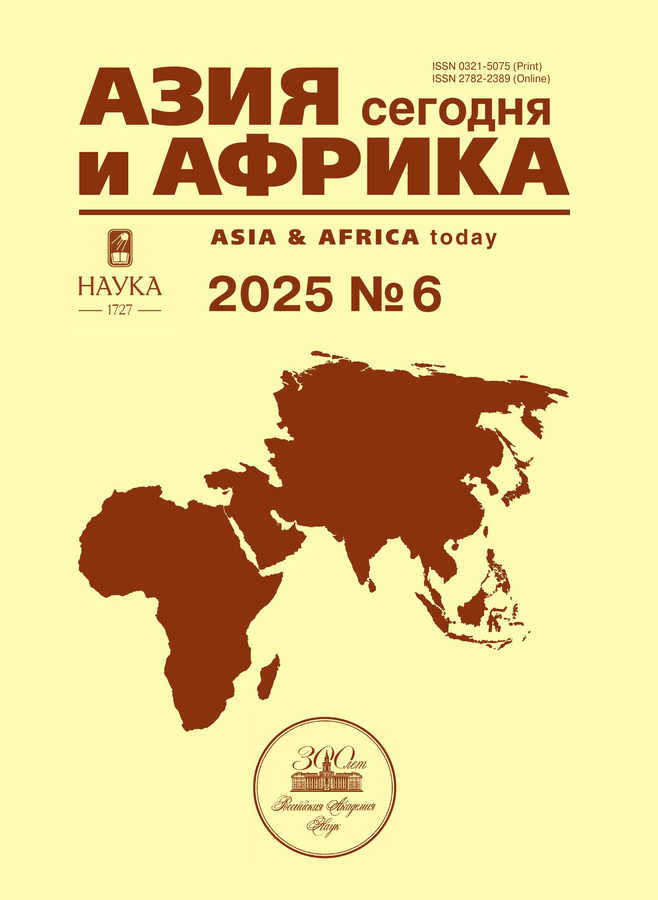China’s Foreign Trade: The Role of Foreign and Domestic Sectors
- Authors: Izotov D.A1
-
Affiliations:
- Economic Research Institute, Far Eastern Branch, Russian Academy of Sciences
- Issue: No 12 (2024)
- Pages: 24-32
- Section: Politics, economics
- URL: https://permmedjournal.ru/0321-5075/article/view/647483
- DOI: https://doi.org/10.31857/S0321507524120034
- ID: 647483
Cite item
Abstract
The article shows the decrease in the share of the foreign sector in China’s trade turnover on average for 2018–2023. The share of Chinese foreign sector by type of enterprises (foreign-invested enterprises) was 37%, and according to the customs regimes (processing trade) – 23%. It was established that the share of processing trade was less than half of the foreign-invested enterprises trade. At the same time, the foreign sector continues to be one of the main sources of high-tech exports from China. It is shown that ordinary trade has become dominant in almost all product groups of Chinese exports, and the growth of foreign trade was ensured by private enterprises in the domestic sector of China. It is shown that the Chinese domestic sector increases the number of countries exporting its goods, while the export basket becomes more complex.
About the authors
D. A Izotov
Economic Research Institute, Far Eastern Branch, Russian Academy of Sciences
Email: izotov@ecrin.ru
ORCID iD: 0000-0001-9199-6226
Dr.Sc. (Economics), Leading Researcher, Department of Regional Models Khabarovsk, Russia
References
- Kim B. What has China learned from processing trade? Economic Structures. 2017. Vol. 6. Iss. 32. Pp. 1–14. doi: 10.1186/s40008-017-0088-5
- Hu C., Tan Y. Export spillovers and export performance in China. China Economic Review. 2016. Vol. 41. Pp. 75–89. doi: 10.1016/j.chieco.2016.08.008
- Dai M., Maitra M., Yu M. Unexceptional exporter performance in China? The role of processing trade. Journal of Development Economics. 2016. Vol. 121. Pp. 177–189. doi: 10.1016/j.jdeveco.2016.03.007
- Yang C., Dietzenbacher E., Pei J., Chen X., Zhu K., Tang Z. Processing trade biases the measurement of vertical specialization in China. Economic Systems Research. 2015. Vol. 27. Iss. 1. Pp. 60–76. doi: 10.1080/09535314.2014. 955463
- Portyakov V.Y. 2019. Policy of Foreign Economic Openness in the People’s Republic of China: Main Results and Prospects. Outlines of Global Transformations: Politics, Economics, Law. Vol. 12. Iss. 1. Pp. 44–68. (In Russ.). doi: 10.23932/2542-0240-2019-12-1-44-68
- Lovely M.E., Huang Z. Foreign Direct Investment in China’s High-technology Manufacturing Industries. China & World Economy. 2018. Vol. 26. Iss. 5. Pp. 104–126. doi: 10.1111/cwe.12258
- Fu X. Processing Trade, FDI and the Exports of Indigenous Firms: Firm-Level Evidence from Technology-Intensive Industries in China. Oxford Bulletin of Economics and Statistics. 2011. Vol. 73. Iss. 6. Pp. 792–817. doi: 10.1111/j.1468-0084.2011.00673.x
- Xie W., Xue T. FDI and Improvements in the Quality of Export Products in the Chinese Manufacturing Industry. Emerging Markets Finance and Trade. 2019. Vol. 56. Iss. 13. Pp. 1–11. doi: 10.1080/1540496x.2019.1609936
- Luo W., Lu Y., Shi H. Why did Chinese state-owned enterprises have higher export propensity? A study based on 2003–2007 data. Economics of Transition and Institutional Change. 2023. Vol. 31. Iss. 3. Pp. 561–588. doi: 10.1111/ecot.12353
- Dong G., Kokko A., Zhou H. Innovation and export performance of emerging market enterprises: The roles of state and foreign ownership in China. International Business Review. 2022. Vol. 31. Iss. 6. doi: 10.1016/j.ibusrev.2022.102025
- Lin K.J., Lu X., Zhang J., Zheng Y. State-owned enterprises in China: A review of 40 years of research and practice. China Journal of Accounting Research. 2020. Vol. 13. Pp. 31–55. doi: 10.1016/j.cjar.2019.12.001
- Hummels D., Ishii J., Yi K.M. The Nature and Growth of Vertical Specialization in World Trade. Journal of International Economics. 2001. Vol. 54. Iss. 1. Pp. 75–96. doi: 10.2139/ssrn.163193
- Brandt L., Li B., Morrow P.M. Processing trade and costs of incomplete liberalization: The case of China. Journal of International Economics. 2021. Vol. 131. doi: 10.1016/j.jinteco.2021.103453
- Brandt L., Morrow P.M. Tariffs and the Organization of Trade in China. Journal of International Economics. 2017. Vol. 104. Pp. 85–103. doi: 10.1016/j.jinteco.2016.10.010
- Xie Y., Song C. The role of processing trade in exporters’ responses to exchange rate: Evidence from China. The World Economy. 2020. Vol. 43. Pp. 1521–1543. doi: 10.1111/twec.12909
- Lemoine F., Unal D. China’s Foreign Trade: A “New Normal”. China & World Economy. 2017. Vol. 25. Iss. 2. Pp. 1–21. doi: 10.1111/cwe.12191
- Jiang X., Kong Y., Li X., Yang C., Chen X. Re-estimation of China-EU trade balance. China Economic Review. 2019. Vol. 54. Pp. 350–366. doi: 10.1016/j.chieco.2019.01.008
- Chen Z., Erbahar A., Zi Y. Made and Created in China: The Role of Processing Trade. CEPR International trade and regional economics DP14486. 2023. https://cepr.org/publications/dp14486 (accessed 01.06.2024)
- Bai X., Hong S., Wang Y. Learning from processing trade: Firm evidence from China. Journal of Comparative Economics. 2021. Vol. 49. Pp. 579–602. doi: 10.1016/j.jce.2020.12.001
- Manova K., Yu Z. How Firms Export: Processing vs. Ordinary Trade with Financial Frictions. Journal of International Economics. 2016. Vol. 100. Pp. 120–137. doi: 10.1016/j.jinteco.2016.02.005
- Chen Q., Zhu K., Liu P., Chen X., Tian K., Yang L., Yang C. Distinguishing China’s processing trade in the world input-output table and quantifying its effects. Economic Systems Research. 2019. Vol. 31. Iss. 3. Pp. 361–381. doi: 10.1080/09535314.2018.1534225
Supplementary files











